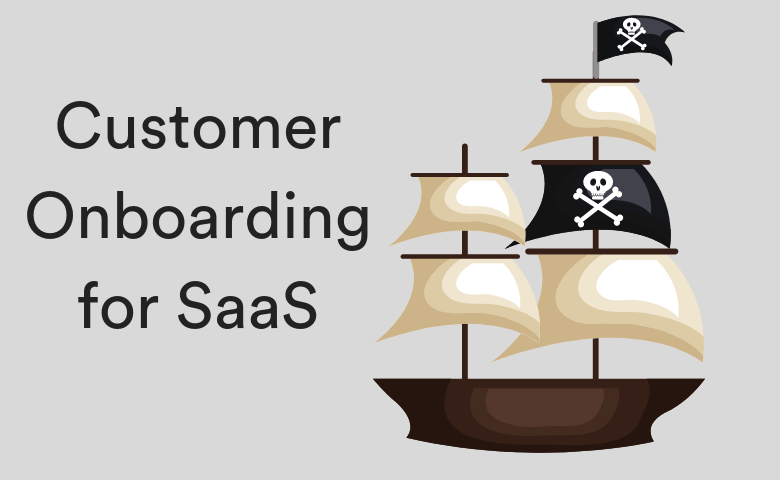
Customer Onboarding for SaaS

How many times have you downloaded a new app, found it confusing to use, and closed it, never to touch it again? Many products have died, not because they're not useful, but because it was too difficult for anybody to figure out how to use them. Don't make the same mistakes so many others have made - invest some time and effort into making your onboarding process a breeze!
Understanding SaaS
In order to dive into the mysterious world of SaaS onboarding, we need to understand why customer onboarding is important for SaaS in particular. Software as a service - commonly known as SaaS - is a model of software delivery where users pay a recurring subscription to access software hosted on the internet. This is opposed to models where users purchase a license and install the software on their own computer or server. As a result, SaaS typically has substantially lower upfront costs for the user. SaaS subscriptions are most commonly monthly or annual, and typically include a certain amount of usage, as well as support.
What is customer onboarding?
Customer onboarding is the process of introducing new customers, or potential new customers, to a product. In particular, it involves gradually introducing new users to key features and guiding them through the process of using the product. The aim is to enable new users to be successful in using the software, as successful users are more likely to purchase a subscription after a free trial or renew their subscription in the future.
The reason customer onboarding is so crucial for SaaS is that the entire SaaS business model depends on customers renewing their subscriptions. SaaS businesses don't just have to convince people to buy their product - they have to convince them to keep paying for it over a long period of time. This means that the job is not done once a customer has bought the product. This is especially true for products which offer a free trial. In this scenario, you only have 30 or 14 or 7 days to convince your triallist that your product is so amazing that they should pay for it. And the stats are sobering - 40-60% of users who download a free trial will use it once and never return. To avoid becoming part of this statistic, it's crucial to onboard customers rather than throwing them in the deep end and hoping they learn to swim.
Strategies for customer onboarding
The strategies that SaaS businesses use to onboard their customers vary widely. Common strategies for onboarding include:
- Email onboarding. This typically consists of a sequence of emails to users who have recently signed up, beginning with a "welcome" email immediately after they sign up. These emails are intended to introduce users to features within the software and to show them how they can achieve their goals within the software. They can be sent at predetermined time intervals after a user signs up, or they can be triggered by the user taking certain actions within the software.
- In-app onboarding. This can consist of welcome screens, pop-ups, tutorials, tool-tips, or any other feature which is integrated into the interface of the software. This is intended to guide the user through exploring the software. This strategy has the advantage of allowing users to do all their onboarding in one place (the product), and if done well, users will start using the product as part of the onboarding process. An great example of in-app onboarding is Slack, which onboards users by having them use Slack to chat to "slackbot", guiding them through the set-up process.
- Content. Creating blogs and videos that walk your users through how to use your product allows them to take a "learn at your own pace" approach. This kind of "on demand" learning is a great resource for your users, but is best paired with a more high-touch strategy such as emails or in-app onboarding. Otherwise, you can bet that most your users will give up rather than search through your blog with no guidance.
- In-person training. For smaller businesses, or for exceptionally valuable prospects, in-person training is a great way to show your new users the value of your product. This allows new users to connect with a real person, have all their questions answered, and see for themselves what is possible with the software.
Measuring onboarding
So, it's pretty easy to see why onboarding new users is so important. What can be trickier is knowing whether you're doing a good job. Many companies ask for feedback specifically about their onboarding process. An obvious metric of whether your onboarding process is successful is the number of users who convert to paying customers at the end of their trial. However, this by itself doesn't tell you a lot about what makes your process successful or unsuccessful. Some other useful metrics for measuring onboarding success are:
- User metrics - tracking the number of users currently onboarding and the number of active users will give a "headcount" view of user onboarding
- Session metrics - tracking the number of sessions per user and session duration can indicate whether users are engaged with the onboarding process. If users keep coming back to your product or are spending long periods in the product, you're probably doing well! Conversely, if users have multiple sessions on the same step of your onboarding process or the same section of your product, they may be struggling to figure it out.
- Event metrics - this metric involves tracking the number of times users take specific actions within your product. This is one of the best ways to measure whether users have been successfully onboarded.
It can be useful to visualize these measurements using techniques such as heatmaps, funnel charts, or time series modeling.



